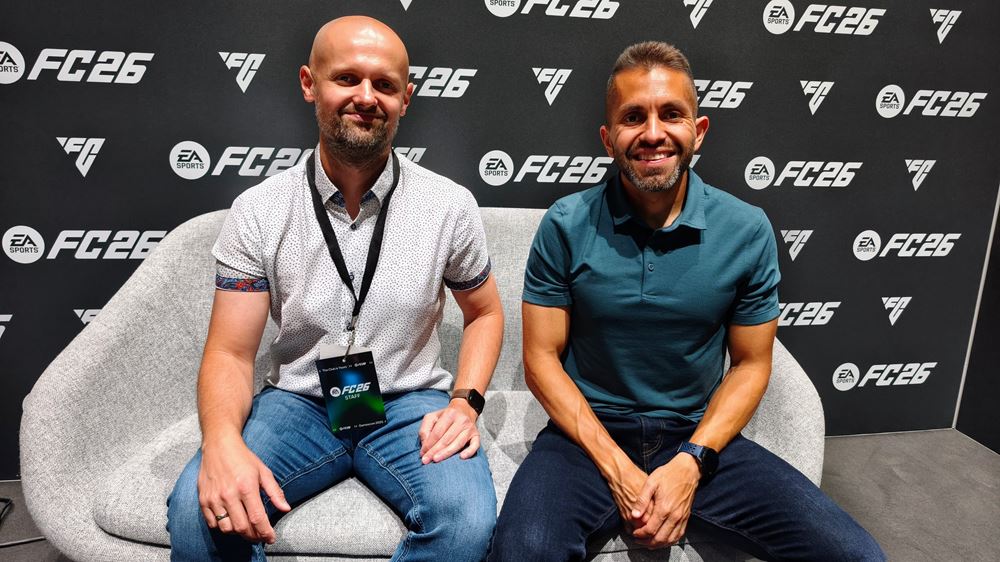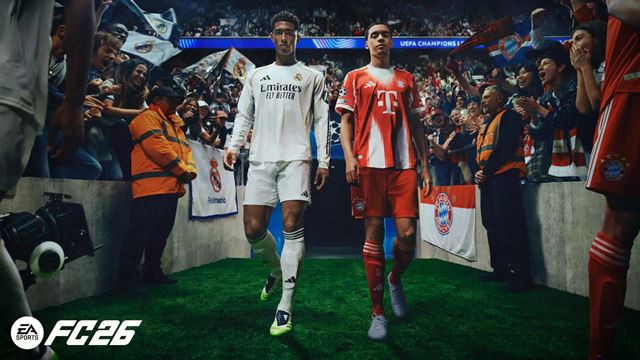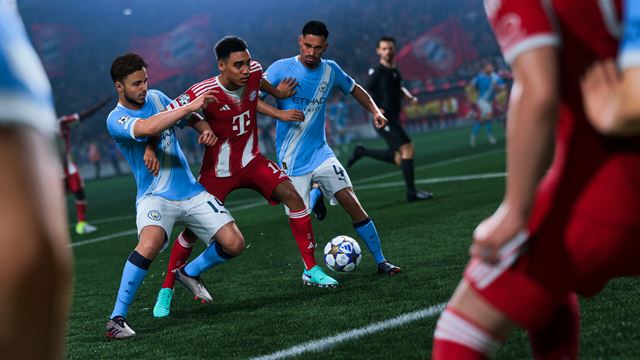|
|
What changes will the new FC 26 bring: An exclusive interview with the gameplay team9/1/2025
As part of Gamescom, we had the exclusive opportunity to ask the developers questions focused on the new gameplay mechanics in FC 26
|
The release of a new instalment of the popular EA FC series is every year one of the biggest gaming events for football fans. We eagerly anticipate what changes the new entry will bring ó whether it fixes the flaws of its predecessor or introduces brand-new modes. At Gamescom, we were given the exclusive chance to interview two of the creators behind the gameplay mechanics of FC 26. And although our time for questions was strictly limited, we tried to uncover as many new features as possible, as well as gain insight into the developersí own thinking when making adjustments.
The archetype system represents a major shift from the traditional pro player progression. How did you approach balancing each archetype so that it feels distinct and powerful, while still giving players the freedom to customize their growth?
Archetypes apply to both Clubs and Player Career. Honestly, we spent hours and hours working on them. We collaborated closely with the Clubs and Career teams to make sure the balance felt right ó and thatís the case with any gameplay change. But with archetypes, it was especially important that they work well with each other, whether in Clubs or Career mode.
We play the game a lot ourselves, together with our partner teams, and we even run weekly sessions to keep testing balance. On top of that, we now have a closed beta, so weíre getting tons of feedback from players. If we see an archetype is too weak, or needs more uniqueness, we can adjust accordingly.
And of course, this is always inspired by real football. Real players canít do everything ó Haaland canít dribble like Messi. We want to reflect that kind of individuality, to create stronger player personalities. Archetypes are the way to achieve that.
Clubs now include tournaments with specific entry conditions and unique house rules. How did you ensure these experimental formats stay fair and competitive, while still offering variety and fun for players?
Since weíre on the gameplay team, we donít directly design tournaments, so I canít go into detail there. What we can say is how archetypes interact within Clubs, since thatís also a gameplay feature. The main thing we can share about tournaments is that they came directly from community feedback. Players really wanted them back. Bringing them into FC 26 gives us a chance to refresh the experience ó and to add more variety. Tournaments will be an important part of both Clubs and Ultimate Team.
Youíve also introduced competitive and authentic gameplay modes. Was that based on feedback from pro players, who wanted faster, more responsive gameplay? Or was it more about giving casual players different options?
Thatís a big one. Competitive gameplay is mainly for the online community ó itís all about snappy, responsive controls. Press a button, and you see the action instantly. Authentic gameplay, on the other hand, is very different: itís slower-paced and aims for a realistic football feel. Think of watching the Champions League on TV, then jumping into Career Mode or Kick-Off. Youíll notice more lifelike pacing and outcomes there.
To put it simply: competitive is about responsiveness, skill-based mechanics, and fair outcomes. For example, if you time a tackle well, you should win the ball back. Authentic is more tactical ó players run with realistic speed, you have to think ahead, plan your moves. Theyíre very different experiences, and when you play them, you immediately feel the contrast. Both were carefully designed based on what different groups of players were asking for.
In the past, we got a lot of feedback, especially from Career Mode fans, that they werenít happy when competitive-focused changes affected them. Now, with these two modes, we can make adjustments for one without impacting the other. And of course, we play the game ourselves constantly, to make sure those changes feel right.
Did anything change in FC 26 in terms of physics, animations, or injury simulations?
Yes. One of my favorite new features is improved shielding. Shielding existed before, but now itís on another level. With bigger, stronger players like Lukaku or Haaland, when you shield the ball, you immediately feel the difference. But if you go up against someone equally strong, like Van Dijk, it becomes a real physical battle. Itís a noticeable and very welcome improvement.
And for animations, responsiveness was one of the biggest points of feedback from the community. We found that the animation system wasnít always selecting or triggering the fastest possible animations. So now, animations are shorter, more responsive, and trigger immediately when you press a button. In closed beta, players already said this made the game feel much smoother compared to last year.
We played a lot of FC 24 and FC 25, and there was a funny glitch with corners. If you triggered a certain animation, youíd basically score every time ó nothing could stop it. At amateur tournaments, everyone knew the trick, and it became unfair. Was this fixed in FC 26?
Animations arenít always perfect, but I can say that in FC 26, theyíre definitely better. With things like corner kicks, we track conversion rates. If we see anything unusual, we investigate right away. On top of that, we constantly monitor community feedback, videos, and social media. If thereís an exploit or a repeatable type of goal, we address it quickly.
If you had to choose one standout feature of FC 26, the most revolutionary change from your point of view, what would it be?
Itís the goalkeeper system. Goalkeepers now use machine learning to position themselves. Theyíre constantly learning ó whether itís shots from distance, close range, near post, or far post ó they adapt and find the optimal position. This is huge, because goalkeeping was an area where we used to get a lot of negative feedback, and now itís much improved.
Also dynamic dribbling. Throughout development, we reviewed all the animations triggered during sprints, turns, and ball control. Some looked fine visually but werenít responsive enough, so we cut or trimmed them, and introduced new ones. The result is that dribbling now feels as smooth and elastic as possible.
Thank you for your time.






